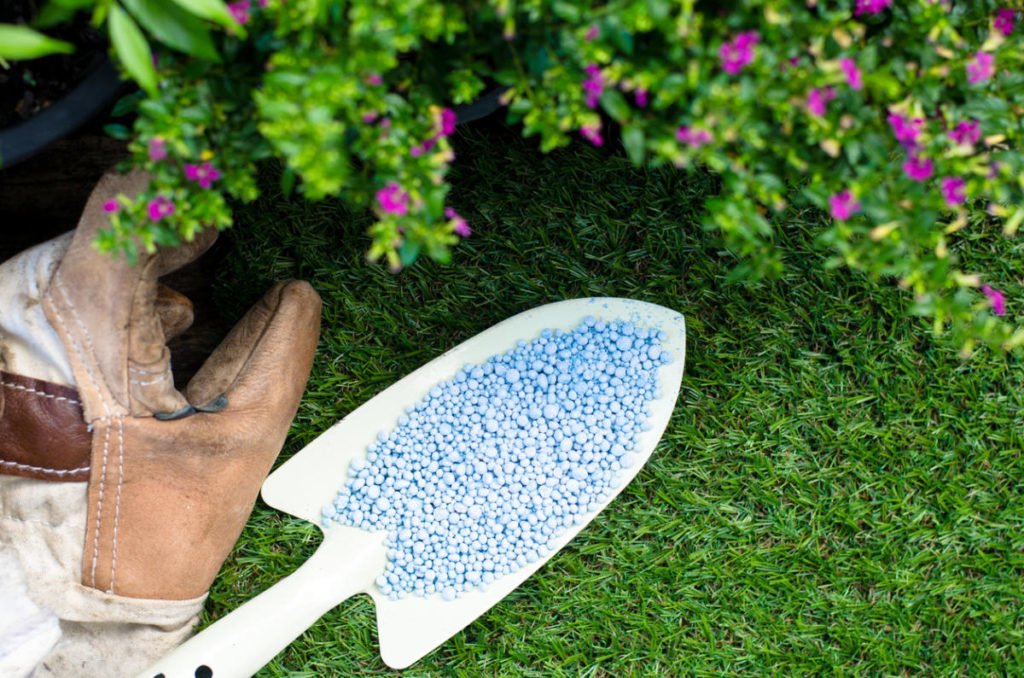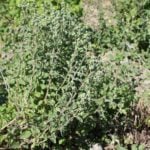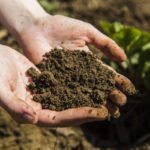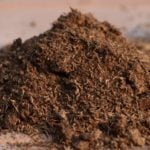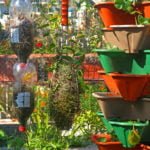Do you wonder what plants eat? It turns out that they are able to get all the necessary substances from the soil, air and water. What is this “food”? Here are its main components: water, carbon, nitrogen, phosphorus, potassium, copper, molybdenum, calcium, iron, manganese, zinc, sulfur and so on — almost the entire periodic table is included in the menu of our green friends. All this is called inorganic mineral fertilizers (except water and carbon, of course).
Mineral fertilizers are both simple and complex. Simple fertilizers contain a single element (e.g. nitrogen or phosphorus), and complex fertilizers consist of two or more components. The wisdom of mother nature is that each plant independently synthesizes the necessary organic elements from inorganic ones. But not always to our green friends enough natural inorganic mineral. Some soils (clay) are poor in manganese and iron, some lack copper and zinc, and some (sand) are poor in nitrogen and potassium.
Therefore, we use a variety of fertilizers for fertilizing garden plants, not forgetting to take into account the type of soil on the site. Consider the most popular types (do not specify the dosage, as it is printed directly on the fertilizer packaging)
Nitrogen fertilizer
The main component of the group of nitrogen fertilizers, as the name implies — nitrogen.

These fertilizers contribute to the development of the above-ground part of the plants and is available in 4 forms:
- nitrate form (sodium and calcium nitrate) in which nitrogen is contained as an acid, easily soluble in water. Saltpeter is introduced into the soil in autumn or early spring, in small doses (overdose promotes the accumulation of nitrates in fruits harmful to human health) is used in fertilizing. Saltpeter is recommended for acidic soils and plants with a short vegetation period (radish, dill, parsley, early cabbage, lettuce);
- ammonium form (ammonium sulfate), wherein the “free vaping” are ammonium ions. Ammonium sulfate is introduced into the soil in the autumn, as it is rather poorly soluble in the soil, which should be deoxidized (ammonium sulfate — physiologically acidic fertilizer). For this purpose, 1.3 kg of lime is added to 1 kg of fertilizer. Onions, tomatoes and cucumbers, late cabbage and other plants with a long growing period are not indifferent to ammonium sulfate;
- the amide form (urea) is the most concentrated nitrogen fertilizer, which is converted into ammonium carbonate in the soil, which is necessary to obtain a plentiful harvest. It is brought under trees and bushes — or directly in the soil at loosening, or in the form of an aqueous solution at watering. Urea is also physiologically acidic fertilizer, which means that the soil needs to deoxidize (to 1 kg of urea add 2 kg of lime);
- ammonium nitrate form physiologically acidic fertilizer, one part of which is easily soluble in water and moves freely in the ground, and the other — delayed action. Ammonium nitrate is used for feeding potatoes, beets, cereals. Especially effective in combination with phosphorus and potassium.
Fertilizing with nitrogen fertilizers is produced in several ways, strictly following the instructions on the package: it is better to observe the principle: it is better to under-fertilize than over-fertilize.
Phosphate fertilizer
Phosphate fertilizers significantly accelerate flowering and fruit set. Phosphorus is usually embedded in the soil during digging in autumn or early spring. It is poorly soluble in water: the period from application to the soil to reach the roots will be 1.5-2 months.

Here are some of the most popular types of phosphate fertilizers:
- simple superphosphate water soluble fertilizer, which contains gypsum and sulfur, is used for all types of soils. It can be poured into rows and holes, and can be used in feeding. Contains from 14% to 20% phosphorus and is usually applied under berry bushes and fruit trees;
- double superphosphate is a simple fertilizer, well soluble in water. Contains sulfur and phosphorus (45% – 50%), is introduced under berry bushes and fruit trees;
- phosphorus powder is an insoluble fertilizer, contains up to 25% phosphorus. It is applied only to acidic soils, as phosphorus becomes available to plants only under the influence of acid. Phosphate rock, introduced into the soil in high doses, provides plants with phosphorus for several years.
Potash fertilizer
Potassium not only increases the yield of plants, but also increases their resistance to disease, increases the shelf life of fruits and significantly improves their taste. Potash fertilizers are rarely used in pure form: as a rule, they are combined with nitrogen, phosphorus and trace elements (copper, zinc, magnesium, iron, and so on).

All potash fertilizers are well soluble in water, and the most popular of them are the following:
- potassium chloride is a natural fertilizer produced from potassium ores. On the one hand, the fertilizer contains chlorine, which is undesirable for some garden crops, and on the other — is a storehouse of valuable elements necessary for plant nutrition. Therefore, potassium chloride is better to make the soil in the autumn-the spring of its” harmful ” part is washed away. Especially like potassium, potatoes, barley, beets, buckwheat and some crops;
- the potassium salt includes potassium chloride, sylvite and kainite. The action is similar to potassium chloride, is introduced into the soil only in autumn;
- potassium sulfate does not contain chlorine, suitable for all crops, especially responsive to it roots. It is introduced directly into the soil and used in fertilizing. Combined with all macro – and micronutrients, except for calcium.
Complex mineral fertilizer
The group of complex mineral fertilizers include:

- ammophos fertilizer containing nitrogen (52%) and phosphorus (12%). Suitable for all kinds of vegetable and fruit crops;
- diammofoska granulated nitrogen (10%) — phosphorus (26%) — potassium (26%) fertilizer, which contains trace elements (calcium, magnesium, iron, zinc, sulfur and others), significantly increasing the agronomic value of diammofoska. Used for all plant groups;
- nitroammofoska complex fertilizer containing nitrogen (16%), phosphorus (16%), potassium (16%), sulfur (2%). Nitroammofoska perfectly absorbed by plants, suitable for use on soils of any composition and for all plant species;
- nitrofoska complex nitrogen (11%) – phosphorus (10%) – potassium (11%) fertilizer, used as the main plant feeding. It is used for all crops on heavy soils made in the fall, the lungs can be made in the spring.
Microfertilizers
There is another group of mineral fertilizers micronutrients, which include trace elements: zinc, copper, manganese, iodine, iron, molybdenum, boron and so on. Micronutrients are used only when there are few trace elements in the soil. For example, peat contains almost no copper, and sod-podzolic molybdenum is absent.
Microfertilizers are good to process the seed, strictly observing the dosage (indicated on the package). They contribute to the development of the root system of plants, protect them from diseases, increase immunity and productivity. Complex microfertilizers often contain organic matter and growth stimulants.
As you can see, there are a lot of different dressings that can significantly increase the yield and improve the appearance of plants. And what mineral fertilizers do you use? Share your secrets
